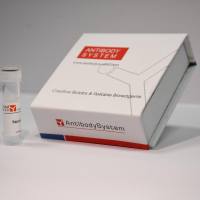In Vivo Nanotoxicity Assays in Plant Models
互联网
427
Increasing application of silver nanoparticles (SNPs) and zinc oxide nanoparticles (nZnO) in consumer products like textiles, cosmetics, washing machines and other household products increases their chance to reach the environment. Intensive research is required to assess the nanoparticles’ toxicity to the environmental system. The toxicological effect of nanoparticles has been studied at the miniscule scale and requires intensive research to be conducted to assess its unknown effects. Plants are the primary target species which need to be included to develop a comprehensive toxicity profile for nanoparticles. So far, the mechanisms of toxicity of nanoparticles to the plant system remains largely unknown and little information on the potential uptake of nanoparticles by plants and their subsequent fate within the food chain is available. The phytoxicological behaviour of silver and zinc oxide nanoparticles on Allium cepa and seeds of Zea mays (maize), Cucumis sativus (cucumber) and Lycopersicum esculentum (tomato) was done. The in vitro studies on A. cepa have been done to check the cytotoxicological effects including mitotic index, chromosomal aberrations, vagrant chromosomes, sticky chromosomes, disturbed metaphase, breaks and formation of micronucleus. In vitro and in vivo studies on seed systems exposed to different concentration of nanoparticles dispersion to check phytotoxicity end point as root length, germination effect, adsorption and accumulation of nanoparticles (uptake studies) into the plant systems. In vivo studies in a seed system was done using phytagel medium. Biochemical studies were done to check effect on protein, DNA and thiobarbituric acid reactive species concentration. FT-IR studies were done to analyze the functional and conformational changes in the treated and untreated samples. The toxicological effects of nanoparticles had to be studied at the miniscule scale to address existing environment problems or prevent future problems. The findings suggest that the engineered nanoparticles, though having significant advantages in research and medical applications, requires a great deal of toxicity database to ascertain the biosafety and risk of using engineered nanoparticles in consumer products.







